Gmail Account Recovery
Gmail is an indispensable tool in both personal and professional communication, serving as a crucial platform for managing emails, scheduling appointments, and receiving essential notifications. However, circumstances such as forgetting a password, facing security issues like unauthorized access, or accidental deletions can disrupt this access, prompting the need to recover a Gmail account.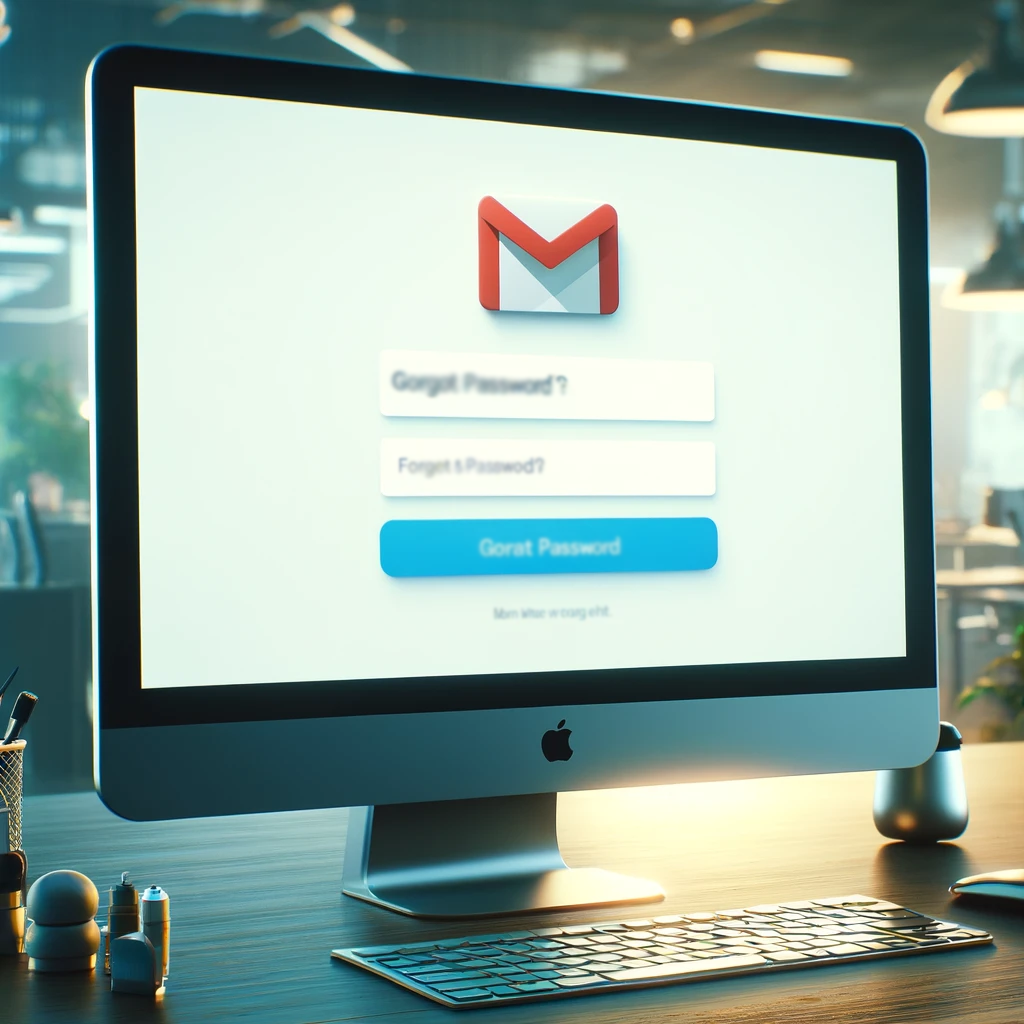
Many users frequently find themselves in situations where they must engage in the Gmail account recovery process. Whether it’s due to a forgotten password, a compromised account, or the recovery of a previously deleted account, understanding how to recover a Gmail account is crucial. This blog is designed to assist users in navigating the Gmail account recovery process, providing clear steps and advice on how to recover a Gmail account efficiently to restore full functionality with minimal disruption.
Understanding the Gmail account recovery process is essential for anyone who relies on their Gmail for daily interactions and data exchange. It ensures that you can swiftly restore access to your account with minimal disruption to your personal or professional life. This blog aims to navigate you through the varied scenarios and solutions involved in recovering access to your Gmail account, ensuring you can continue to communicate and operate effectively in our interconnected world.
Understanding Gmail Account Recovery
Gmail account recovery is designed to help users regain access to their accounts under various circumstances. Below, we’ll break down the process and situations leading to the necessity for recovery:
What Gmail Account Recovery Entails:
-
- Gmail Account recovery involves a series of verification steps that Google uses to ensure that the person attempting to regain access is the legitimate account holder.
- The process is designed to be comprehensive to maintain tight security, often requiring users to verify their identity through multiple means.
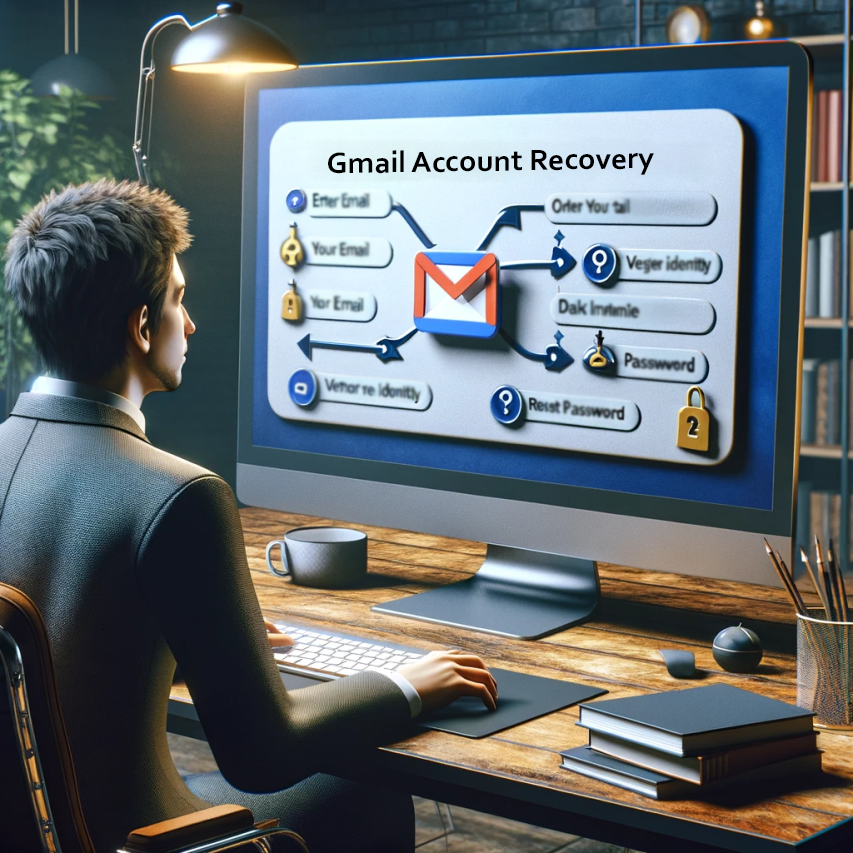
Situations Leading to Gmail Account Recovery:
-
-
Forgotten Password of Gmail Account:
It is the most common reason for Gmail account recovery. Users often forget their passwords, especially if they follow best practices and choose complex ones.
-
Gmail Account Hacking:
If an account is compromised, the hacker may change the password and other security details, preventing the original owner from accessing the account. In such cases, Gmail account recovery and security measures help restore the user’s access. If your account got hacked and want to know the solution for it, you can read our detailed blog on Gmail Account Hacked.
-
Locked Out of Gmail Account:
Google may lock an account if it detects unusual activity such as multiple failed login attempts or suspicious behavior, triggering the need for recovery.
-
Recovering a Deleted Gmail Account:
Users who have deleted their Gmail accounts but later wish to restore them can attempt to recover them through the Gmail recovery process, if the attempt is made within a certain timeframe after deletion.
-
Verification Methods in Gmail Account Recovery:
-
- The recovery process may ask for answers to security questions, verification via a secondary email or phone number, or details about recent emails sent or received.
- This thorough verification helps to make sure that Gmail account recovery is both secure and effective, preventing unauthorized access while assisting the rightful owner.
Understanding these key aspects of Gmail account recovery can empower users to effectively manage their accounts and navigate the recovery process when necessary.
Pre-Recovery Steps for Gmail Account
Before facing any issues that require you to perform Gmail account recovery, taking proactive measures can significantly ease the process. Ensuring that your account recovery options are up-to-date is crucial for quick and efficient account restoration. Here’s how you can prepare in advance to streamline the process of how to recover a Gmail account: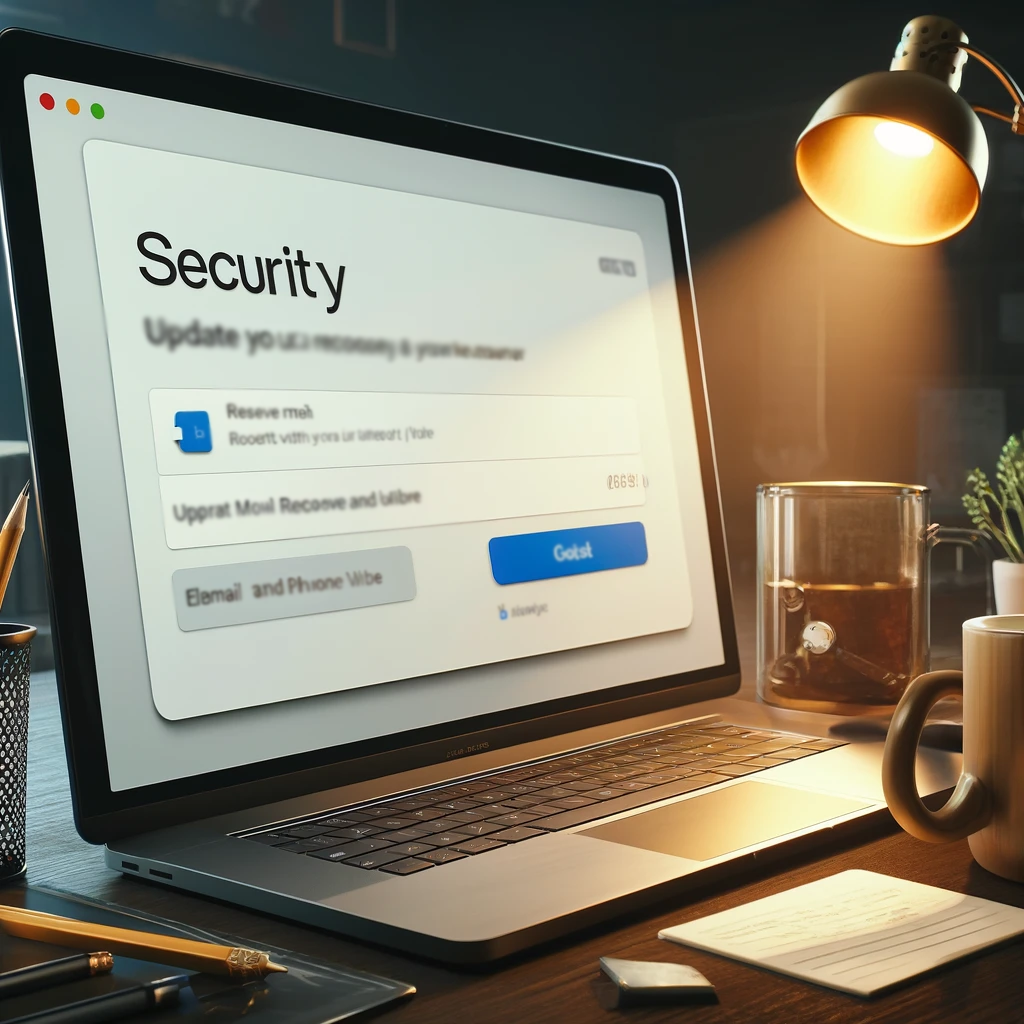
Understanding the Importance of Updated Gmail Account Recovery Options
Keeping your recovery options current is essential for Gmail account recovery. These options are your best means of proving your identity and taking back access to your account in case you forget your password. Updated recovery details reduce the risk of getting permanently locked out of your account.
Setting Up Gmail Account Recovery Email and Phone Number:
-
Visit the account recovery page on Google:
This page is critical for anyone wondering how to recover Gmail account. Here, you can add or update recovery options.
-
Add a recovery email:
Log into your Gmail account, go to ‘Settings’, select ‘Accounts and Import’, and then click on ‘Change account settings’. Choose ‘Change password recovery options’, and enter your preferred recovery email. This email should be active and accessible, not necessarily a Gmail address, and one you check regularly.
-
Add a recovery phone number:
Follow the same steps as for the recovery email, but instead, you will add a phone number. This number can be used to receive text messages or calls for recovery purposes. Make sure it is a number that is secure and regularly used by you.
Regularly Updating Your Gmail Account Recovery Options:
- Life changes such as new email addresses or phone numbers should ask an update to your recovery options. Visit the Gmail account recovery page periodically, especially if you’ve recently changed your contact information.
- Google may occasionally ask you to verify your recovery email and phone number. Respond to these instructions as they are designed to help keep your account secure.
By understanding how to recover a Gmail account and keeping your recovery information up-to-date, you minimize the risk of losing accessibility of your Gmail. This preparation ensures that if you ever need to perform a Gmail account recovery, the process will be as swift and hassle-free as possible.
Step-by-Step Gmail Account Recovery Process
If you find yourself unable to access your Gmail account, the Gmail account recovery process is designed to help you regain control. Whether you’re trying to figure out how to recover a forgotten Gmail account or simply need to restore access after being locked out, the following detailed instructions will assist you through the Gmail account recovery process.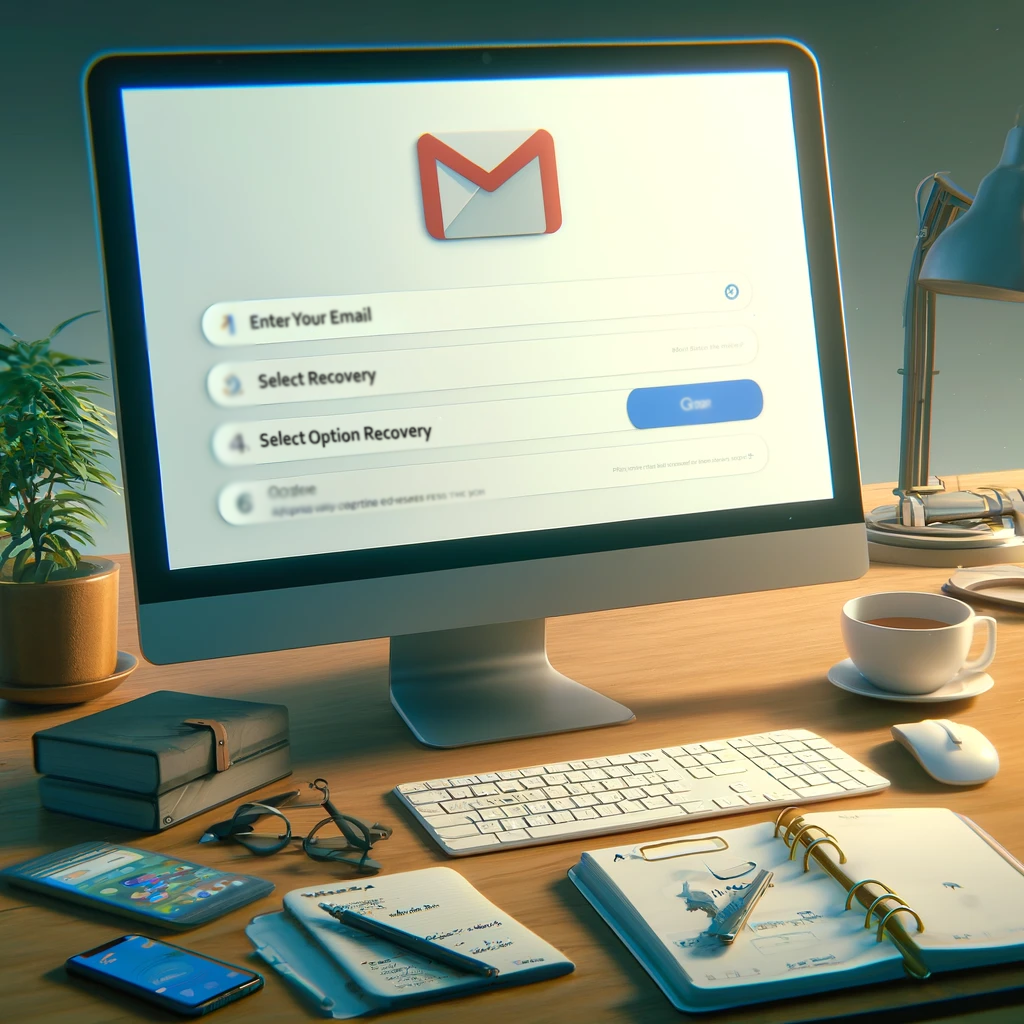
Starting the Gmail Account Recovery Process
- Begin by visiting the Gmail account recovery page. This is the starting point for anyone wondering how to recover a Gmail account. You can access this page by clicking ‘Forgot password?’ on the Gmail login page.
- You will be asked to type the email address for which you need to recover access. After entering your email, click ‘Next’ to proceed.
Verification Methods Used by Gmail:
-
Using a Phone Number:
If you have previously added a phone number to your account, Gmail might ask you to confirm a code sent via text message or call. This is one of the most straightforward verification methods.
-
Using an Alternate Email:
Gmail might also send a confirmation code to a backup email address. You must access this email and enter the code on the recovery page to prove your identity.
-
Answering Security Questions:
If phone or email verification isn’t possible, you might be asked to answer security questions that you set up when you created the account. It’s crucial to answer these as accurately as possible.
What to Do If You Don’t Have Access to Your Gmail Account Recovery Options:
- If you can’t access your recovery phone number or alternate email, you can still try to recover your Gmail account by providing more information. Click on ‘Try another way’ on the Gmail account recovery page.
- You may be asked to provide details like the last password you remember, when you last accessed the account, or other specific actions (like emails sent) that can help verify your identity.
- It’s important to provide as much accurate information as possible to facilitate the recovery process. Google uses this information to ensure that the account belongs to you.
Each step in this process is designed to securely verify your identity before giving access to your Gmail account. If at any point you find that the verification options are not possible for you to access, continued attempts with as much detailed information as you can remember will be your best route. Remember, keeping your recovery options up to date can vastly simplify the Gmail account recovery process. Whether you’re dealing with a forgotten Gmail account or other access issues, Google has structured its recovery options to help you regain access efficiently and securely.
Troubleshooting Common Gmail Account Recovery Issues
When attempting to recover a Gmail account, users may run into a range of issues that can hinder the recovery process. Understanding how to troubleshoot common recovery issues is essential to regaining access to your account efficiently. Below are detailed steps and tips on how to address the most frequent problems, including “Account not found,” outdated or inaccessible recovery options, and issues with not receiving verification codes.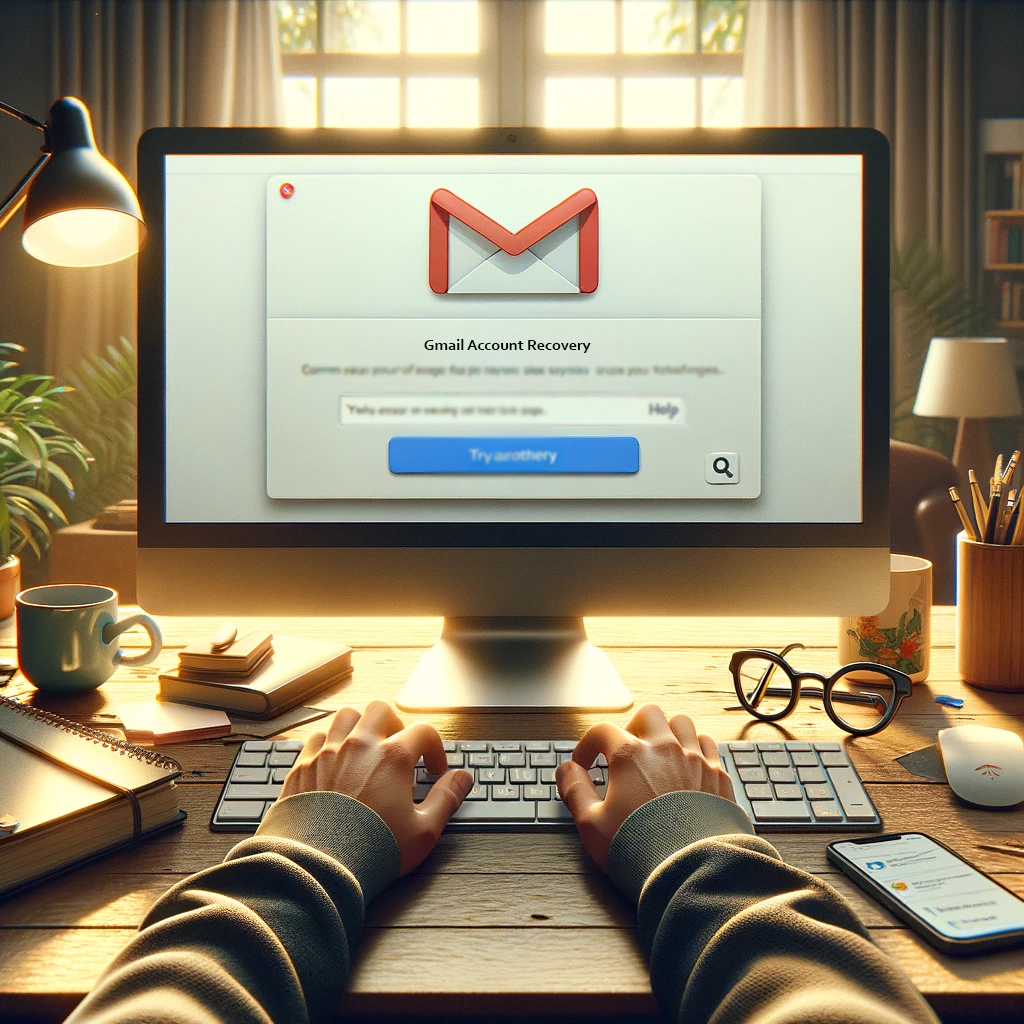
Handling “Account Not Found”:
- This error might occur if you enter the email address incorrectly or if the account has been deleted. Double-check the email address for typos.
- If you believe the account may have been deleted, try to remember if you or someone with access to your account might have deleted it. Deleted accounts can sometimes be recovered if you act quickly by visiting the Gmail account recovery page and following the steps for recovery.
Outdated or Inaccessible Gmail Account Recovery Options:
- If your recovery email or phone number is no longer valid, how can you recover a Gmail account? On the recovery page, when asked to use the outdated option, select ‘Try another way’ to see alternative methods of verification.
- Provide as much information as possible, such as the last password you remember or when you last accessed the account. This can help Google verify your identity without the outdated information.
- Regularly updating your recovery details can prevent this situation. However, if you’re currently locked out, focus on providing other details that can help verify your ownership of the account.
Solutions for Not Receiving Verification Codes for Gmail Account Recovery:
- If you are not receiving the verification code via SMS or email, check for any signal issues that might be affecting your phone’s ability to receive messages. Ensure your email inbox is not full, or that the emails are not being sent to the spam or junk folder.
- Request the code again and wait a few minutes, as sometimes network delays can affect delivery times.
- If repeated attempts fail, use the ‘Try another way’ option on the Gmail account recovery page to select a different method for receiving the verification code.
When you cant recover Gmail account through standard means, these steps provide alternative solutions. Understanding and navigating these troubleshooting methods is crucial for anyone looking to understand how to recover Gmail account effectively and securely.
Enhanced Security Measures Post-Recovery of Gmail Account
After you’ve successfully managed to recover a Gmail account, it’s critical to bolster the security to prevent future compromises. These measures are essential for ensuring that your Gmail account recovery efforts are not in vain, and they help protect your account from unauthorized access going forward. Below, we explore effective strategies for setting up two-factor authentication, crafting a strong password, and managing connected devices and third-party app permissions.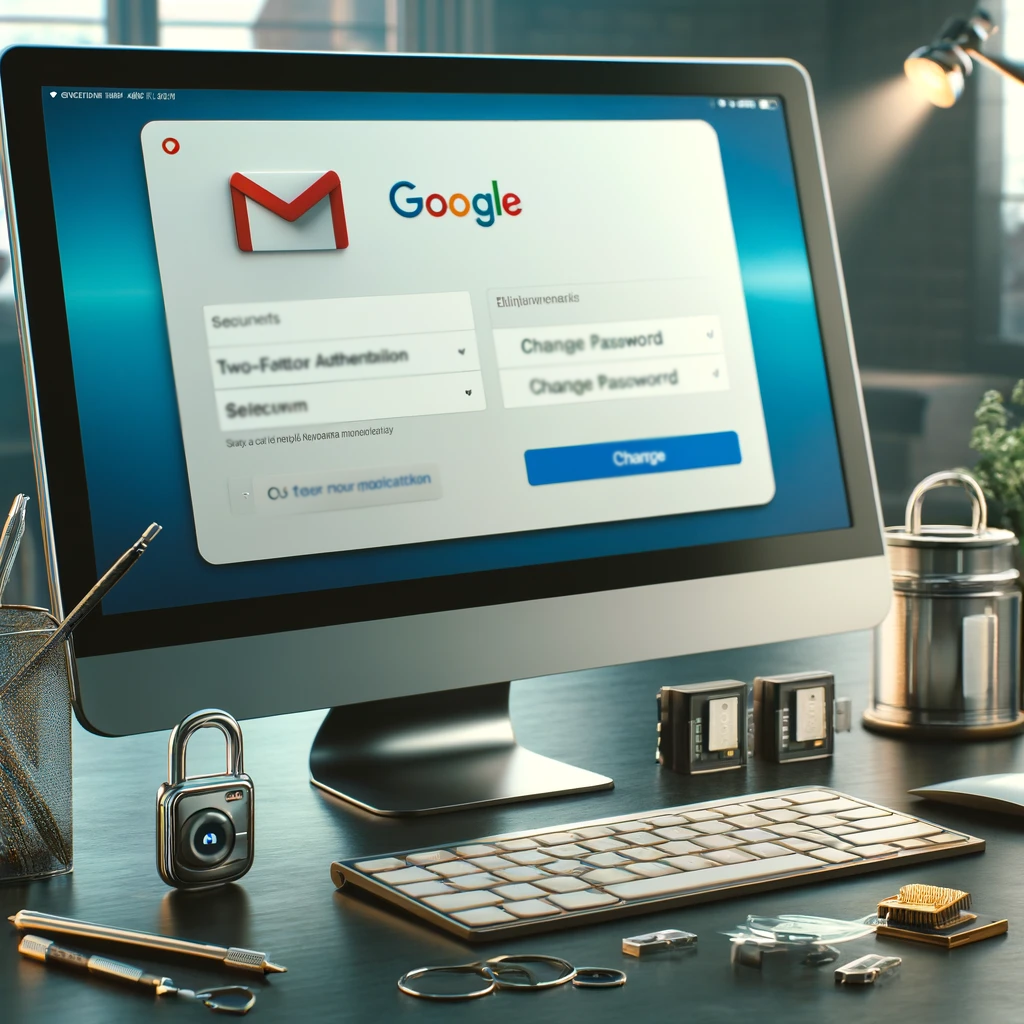
Setting Up Two-Factor Authentication (2FA) in Gmail:
- Implementing two-factor authentication adds a robust layer of security by requiring not just a password and username, but also something only the user possesses, such as a mobile device. To enable 2FA, navigate to your Google Account security settings.
- Under “Signing in to Google,” click on “2-Step Verification.” You can then select your preferred way of secondary verification, such as receiving a text message or using an authentication app. This step is vital, especially if you have had to recover an old Gmail account or recover your Gmail address in the past, as it adds an extra barrier of security against unauthorized access.
Tips for Creating a Strong, Memorable Password for Gmail Account:
- A robust password is essential for securing your account. Post-recovery, aim to create a new password with a minimum of 12 characters, incorporating a combination of capital and lowercase alphabets, numbers, and symbols. Avoid predictable patterns and sequences.
- To make your password memorable yet hard to guess, use a phrase or combination of words that has personal significance but is obscure to others. For those managing multiple accounts, consider using a password manager to maintain high-security standards without the risk of forgetting your credentials.
Managing Connected Devices and Third-Party App Permissions for Gmail:
- After the Gmail account recovery process, it’s prudent to review and manage which devices have access to your account. Access your Google Account security settings to see a list of devices currently logged in or those that have logged in recently.
- It’s also advisable to audit the permissions you’ve granted to third-party apps. Revoke access to any apps that don’t need to be connected to your Gmail, particularly those that are unfamiliar or unnecessary.
- Maintaining up-to-date permissions and regularly reviewing device access can greatly decrease the risk of security breaches and helps to keep your Gmail account secured and intact.
By adopting these enhanced security measures, you not only secure your Gmail account following a recovery but also fortify it against potential future threats.
What to Do If Gmail Account Recovery Fails
Even with the best efforts, there are times when Gmail account recovery might not go as planned. If you find yourself unable to recover a Gmail account despite following all recommended steps, there are still options available. Here’s what you can do if you’re unable to recover a lost Gmail account or recover a Gmail account that was deleted.
Considerations Before Creating a New Gmail Account:
- Before deciding to create a new Gmail account, consider the implications. A new account means starting from scratch without access to the emails and data from the old account. Think about how this might affect your personal or professional communications.
- Evaluate if there are alternative email addresses or contact methods you can use to minimize disruption. Inform important contacts about your situation and provide them with a temporary or new way to reach you.
Preventive Measures to Avoid Future Recovery Issues:
- To prevent future Gmail account recovery issues, ensure that all recovery information remains up-to-date. Regularly check and update your recovery phone numbers, alternative emails, and security questions.
- Engage security features like two-factor authentication (2FA) for an added layer of protection. This not only secures your account but also provides alternative recovery options should you forget your password.
- Regularly review and clean your account’s security settings to ensure no old or unused devices or apps have permissions that could compromise your account’s security.
By taking the above proactive steps to secure and maintain your account, you can mitigate the effects of such incidents and protect yourself against future issues. This proactive approach ensures that your efforts in Gmail account recovery are as effective and trouble-free as possible.
FAQs
Q1. How do I start the process to Recover my Gmail Account?
- A. To begin Gmail account recovery, visit the Gmail account recovery page and enter the email address for which you need to recover access. Follow the instructions to check your identity and regain access.
Q2. What should I do if I forgot my password and need to Recover my Gmail Account?
- A. If you’ve forgotten your password, you can reset it by visiting the Gmail recovery page. You’ll need to provide some information to verify your identity, such as your recovery email or phone number, to successfully recover your Gmail account.
Q3. How can I Recover a Deleted Gmail Account?
- A. To recover a deleted Gmail account, act quickly and visit the Gmail account recovery page. You will be guided through a process that includes verifying your identity to see if recovery is still possible.
Q4. What are the steps to Recover an Old Gmail Account?
- A. For old Gmail account recovery, go to the Gmail account recovery page and type the email address you wish to recover. Follow the on-screen steps, which may involve answering security questions or confirming information sent to a recovery email or phone.
Q5. How can I Recover my Gmail Account if I no longer have access to my recovery email or phone number?
- A. If you lack access to your recovery email or phone, select ‘Try another way’ on the Gmail recovery page. You may need to answer security questions or provide other account details to verify your identity and recover your Gmail account.
Q6. What should I do if I don’t receive the verification code during the Gmail Account Recovery Process?
- A. If you’re not receiving the verification code, check your spam folders, ensure your phone can receive messages, or try requesting the code again. If issues persist, use alternative verification methods listed on the Gmail recovery page.
Q7. How do I ensure the security of my Gmail account after recovery?
- A. After recovering your Gmail account, enhance security by setting up two-factor authentication, updating your recovery options, and creating a strong, unique password. Visit the Gmail account recovery and security settings to implement these changes.
Q8. Can I recover a Gmail account that was hacked?
- A. Yes, you can recover a hacked Gmail account. Begin by using the Gmail account recovery page, follow the steps to check your identity, and then update your security details immediately to regain control and secure your account.
Q9. How do I handle being locked out of my Gmail account?
- A. If you’re locked out, visit the Gmail recovery page and follow the steps to verify your identity through your recovery email, phone number, or security questions to recover your Gmail account.
Q10. What preventive measures should I take to avoid needing Gmail Account Recovery in the future?
- A. To avoid future Gmail recovery situations, regularly update your recovery options, use a strong and unique password, enable two-factor authentication, and regularly review your account’s security settings through the Gmail account recovery and security page.
Conclusion
Successfully navigating through the steps to recover an old Gmail account or safeguarding your current account emphasizes the crucial importance of maintaining access to your Gmail. Throughout this blog on Gmail account recovery, we’ve explored various aspects, from initial recovery steps to troubleshooting and enhancing security post-recovery. Maintaining access to your Gmail extends beyond keeping communication lines open; it’s critical for securing your digital identity, which impacts everything from personal correspondence to professional interactions and access to online services.
Gmail account recovery is not just a one-time event but a key component of comprehensive digital security practices. Regularly updating your recovery options via the Gmail recovery page, employing strong passwords, enabling two-factor authentication, and reviewing account permissions are all essential steps. These efforts not only facilitate smooth Gmail account recovery when needed but also bolster your defenses against potential unauthorized access. By consistently applying these practices, you ensure that your digital life is not only active but also protected, keeping you in control of your personal and professional digital interactions.
To know more about Gmail Account Recovery and related issues and solutions, visit our Gmail Support page.


George sanchez
What initial steps should I take to recover my Gmail account if I’ve completely forgotten my password and can’t log in?
Support Admin
If you’ve forgotten your password and are unable to log into your Gmail, start the Gmail account recovery process by visiting the Gmail account recovery page. Click on the ‘Forgot password?’ option found directly on the Gmail login page. You will need to enter the email address for the account you’re trying to recover. Follow the instructions carefully, which may include verifying your identity through a code sent to a linked phone number or an alternative email address. This verification is crucial for securing and successfully recovering your account.
Barbara king
In the scenario where my Gmail account has been compromised and the hacker has changed the recovery email and phone number, what steps should I follow to regain control and recover my Gmail account?
Support Admin
If you discover that your Gmail account has been compromised and your recovery details changed, go immediately to the Gmail recovery page and select ‘Try another way’ when asked for your usual recovery information. You may be prompted to enter the last password you remember or provide details about recent activities in your account, such as emails you sent or received. This information helps Google confirm your identity and proceed with the Gmail account recovery process despite the altered recovery details.